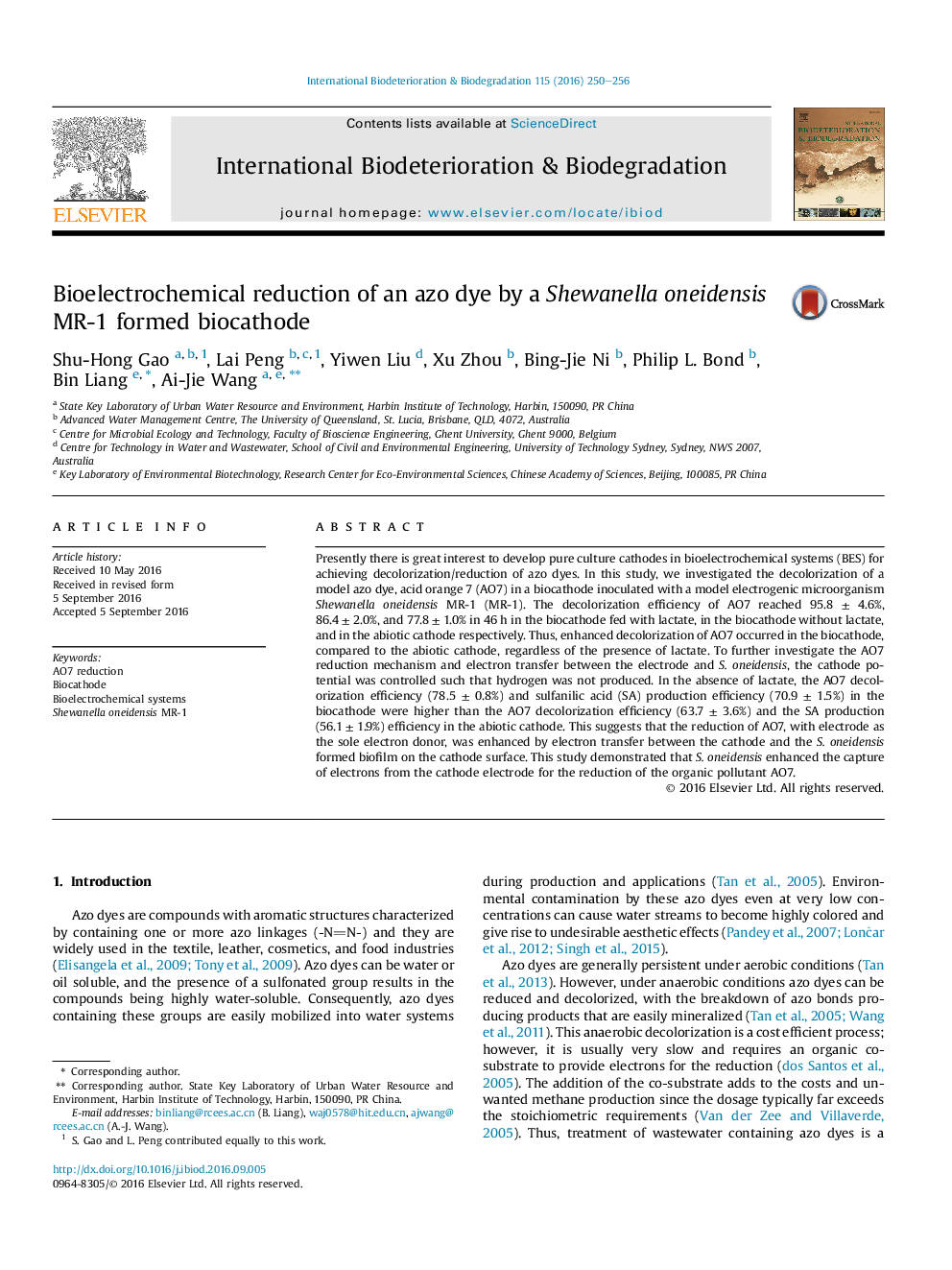| Article ID | Journal | Published Year | Pages | File Type |
|---|---|---|---|---|
| 4364184 | International Biodeterioration & Biodegradation | 2016 | 7 Pages |
•The removal of a model azo dye AO7 in MR-1 formed biocathode was investigated.•Enhanced decolorization of AO7 occurred in the biocathode compared to the abiotic cathode.•AO7 removal was enhanced by the MR-1 formed biocathode with electrode as the sole electron donor.
Presently there is great interest to develop pure culture cathodes in bioelectrochemical systems (BES) for achieving decolorization/reduction of azo dyes. In this study, we investigated the decolorization of a model azo dye, acid orange 7 (AO7) in a biocathode inoculated with a model electrogenic microorganism Shewanella oneidensis MR-1 (MR-1). The decolorization efficiency of AO7 reached 95.8 ± 4.6%, 86.4 ± 2.0%, and 77.8 ± 1.0% in 46 h in the biocathode fed with lactate, in the biocathode without lactate, and in the abiotic cathode respectively. Thus, enhanced decolorization of AO7 occurred in the biocathode, compared to the abiotic cathode, regardless of the presence of lactate. To further investigate the AO7 reduction mechanism and electron transfer between the electrode and S. oneidensis, the cathode potential was controlled such that hydrogen was not produced. In the absence of lactate, the AO7 decolorization efficiency (78.5 ± 0.8%) and sulfanilic acid (SA) production efficiency (70.9 ± 1.5%) in the biocathode were higher than the AO7 decolorization efficiency (63.7 ± 3.6%) and the SA production (56.1 ± 1.9%) efficiency in the abiotic cathode. This suggests that the reduction of AO7, with electrode as the sole electron donor, was enhanced by electron transfer between the cathode and the S. oneidensis formed biofilm on the cathode surface. This study demonstrated that S. oneidensis enhanced the capture of electrons from the cathode electrode for the reduction of the organic pollutant AO7.
